How to Pass a Manual Underwrite While in Chapter 13 Bankruptcy: A Complete Guide
Navigating the world of mortgages can be challenging, especially when you are dealing with a Chapter 13 bankruptcy. For many, getting back on track financially after a bankruptcy means seeking a home loan while still under Chapter 13 protection. While the process may seem daunting, it’s entirely possible to pass a manual underwriting process during Chapter 13 bankruptcy. In this article, we will explore what a manual underwrite is, how it works for Chapter 13 bankruptcy cases, and provide actionable steps you can take to increase your chances of mortgage approval. We’ll also discuss the importance of working with an experienced lender such as Forever Home Financing, who can help guide you through this journey.
What is Manual Underwriting?
When a borrower applies for a mortgage, most loans go through an automated underwriting process. Automated underwriting is typically fast, and it analyzes a borrower’s credit history, income, debts, and assets using algorithms. However, when the borrower’s situation doesn’t fit the standard criteria, such as in the case of a Chapter 13 bankruptcy, the loan may be manually underwritten.
Manual underwriting is a more thorough process that involves a human underwriter evaluating the borrower’s financial situation. This process is often necessary for borrowers who do not meet the criteria of an automated underwriting system (AUS), particularly those who are in a Chapter 13 bankruptcy or have non-traditional credit histories.
In a manual underwrite, the underwriter looks at several factors, including:
•Payment history, especially during the bankruptcy.
•Income stability and consistency.
•Debt-to-income (DTI) ratio.
•Assets and savings.
Manual underwriting gives lenders the ability to approve loans that don’t conform to automated systems, and it’s often used for borrowers with more complex financial backgrounds.
Can You Get a Mortgage While in Chapter 13 Bankruptcy?
Yes, it is possible to qualify for a mortgage while you are still under Chapter 13 bankruptcy, but it requires meeting certain conditions. Chapter 13 bankruptcy is a court-mandated repayment plan that typically lasts between 3 to 5 years. During this time, you are required to make regular payments to your creditors, and this can affect your ability to qualify for traditional mortgage options.
However, there are pathways to securing a mortgage, even with a Chapter 13 bankruptcy in place. Many lenders, including those who participate in government-backed programs like FHA and VA loans, allow borrowers to apply for a mortgage during Chapter 13 bankruptcy, provided they meet specific requirements. These programs are more flexible in terms of the borrower’s credit score and financial history.
If you are under Chapter 13 bankruptcy and looking to apply for a mortgage, manual underwriting may be your best option. In fact, many FHA and conventional lenders will use manual underwriting when dealing with Chapter 13 bankruptcy cases to assess whether you qualify for a loan.
What are the FHA Guidelines for Chapter 13 Bankruptcy?
The Federal Housing Administration (FHA) provides a pathway to homeownership for borrowers who have been through bankruptcy, including Chapter 13. Here are the key FHA requirements for those applying for a mortgage during a Chapter 13 bankruptcy:
1. Chapter 13 Bankruptcy Repayment Plan
FHA guidelines typically require that you have completed at least 12 months of your Chapter 13 repayment plan before applying for a loan. In some cases, if you’ve made regular, on-time payments and have your trustee’s approval, you may be able to apply for an FHA loan even if you are still in the middle of your bankruptcy repayment plan.
2. Stable and Consistent Income
The FHA also requires borrowers to have a stable and consistent income. This is critical because the underwriter will need to see that you can afford the new mortgage payments in addition to your Chapter 13 bankruptcy payments.
3. Trustee Approval
To obtain an FHA loan during Chapter 13 bankruptcy, you must get approval from the bankruptcy trustee. The trustee must approve your mortgage application, and this is an essential part of the manual underwriting process.
4. Good Payment History During Bankruptcy
FHA guidelines will look closely at your payment history during the bankruptcy. You should have a consistent history of making your Chapter 13 payments on time. Missing payments or falling behind during bankruptcy could significantly reduce your chances of approval.
5. No Late Payments in the Last 12 Months
In addition to having a good track record during bankruptcy, FHA requires that you have not missed any payments on your current debts (including bankruptcy payments) in the past 12 months.
For more detailed information on FHA guidelines, you can visit the official HUD.gov website, which provides resources on applying for FHA loans during Chapter 13 bankruptcy.
Steps to Pass a Manual Underwrite During Chapter 13 Bankruptcy
If you’re applying for a mortgage while still under Chapter 13 bankruptcy, here are the steps you need to take to pass a manual underwrite:
Step 1: Maintain Consistent and On-Time Payments
One of the most crucial factors in passing a manual underwrite is demonstrating that you’ve made timely and consistent payments during your bankruptcy. Lenders need to see that you have been able to manage your finances responsibly while undergoing Chapter 13. This includes making your monthly bankruptcy payments and other obligations without any delinquencies.
Step 2: Get Trustee Approval
For most lenders, having trustee approval is an essential step in the process. You will need to get a letter from your bankruptcy trustee that states you are eligible to apply for a mortgage and have completed at least 12 months of your bankruptcy repayment plan.
Your bankruptcy trustee will want to see that you’ve been able to maintain financial stability during your bankruptcy, and this approval is required before moving forward with your mortgage application.
Step 3: Show Stable Income and Employment
Lenders will want to verify that you have stable and consistent income. To pass manual underwriting, you’ll need to provide documentation of your income, such as pay stubs, bank statements, and tax returns. Your income must be sufficient to cover your monthly debts, including your new mortgage payments, without exceeding a reasonable debt-to-income (DTI) ratio.
A stable job history (usually at least two years) will help show that you can continue to make your mortgage payments on time.
Step 4: Document Savings and Assets
Having savings and assets can improve your chances of passing a manual underwrite. Lenders will want to see that you have a financial cushion in case of an emergency. This could include savings accounts, retirement accounts, or other investments. Documenting these assets will help demonstrate to lenders that you are financially responsible and capable of handling future expenses.
Step 5: Maintain a Low Debt-to-Income (DTI) Ratio
Lenders will closely examine your DTI ratio during the manual underwriting process. The DTI ratio measures your monthly debt payments against your monthly income. A lower DTI ratio indicates that you have more disposable income available to make new loan payments.
To increase your chances of passing the manual underwrite, aim to keep your DTI ratio as low as possible. This can be achieved by paying off some of your debts or finding ways to increase your income.
Step 6: Work With a Lender Experienced with Chapter 13 Bankruptcy
One of the most critical steps in passing a manual underwrite is working with an experienced lender. Lenders who specialize in FHA loans or conventional loans for borrowers in Chapter 13 bankruptcy can help guide you through the complex process.
Forever Home Financing is a trusted mortgage lender that has worked with countless clients who are navigating bankruptcy. They have the expertise to help you pass a manual underwrite and secure the best loan for your financial situation.
Benefits of Working With an Expert Lender
When you’re under Chapter 13 bankruptcy, every aspect of your mortgage application becomes more complicated. That’s why working with a trusted lender who understands the complexities of Chapter 13 and manual underwriting is crucial.
At Forever Home Financing, their experts will guide you through the entire process, from getting trustee approval to ensuring you meet all FHA and conventional guidelines. Their experience in manual underwriting can help you get the best possible loan even with a bankruptcy on your record.
Conclusion
Applying for a mortgage while under Chapter 13 bankruptcy may seem challenging, but with the right preparation and expert guidance, it’s entirely possible to pass a manual underwrite and secure a mortgage. Key steps include maintaining a consistent payment history, getting trustee approval, proving stable income, and working with a knowledgeable lender like Forever Home Financing.
By following the steps outlined above, you can improve your chances of passing the manual underwrite process and getting the mortgage you need. For more information on qualifying for FHA loans during Chapter 13 bankruptcy, visit the official HUD.gov website.
Finally, remember that patience is essential when working through bankruptcy-related mortgage processes. Your long-term goal of homeownership is within reach, and with determination and the right support, you can turn that dream into a reality.

